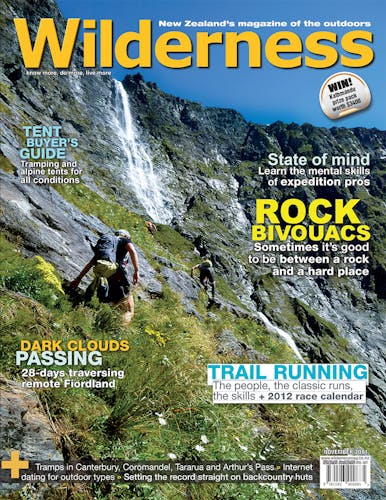New Zealand’s wilderness has deceptive depth and power
Late last year I tried to cross the Buller. The river was crystal clear, the flow even, and it hadn’t rained for over a week. Reading the river seemed easy. Even in my first steps, it seemed the crossing would be straightforward. But then the current bit, the channel deepened and before I knew it I was almost up to my chest in this fast flowing river. I only just managed to turn around and retreat, bemused by how much I’d underestimated the river’s power.
I tend to think our understanding of what wilderness is about can also be a bit like this. On the surface, wilderness seems pretty straightforward. For the tramper in me it’s a great place to escape to, complete with endless forests, surreal swathes of moss and amazing views.
Yet wilderness in this country means so much more. It’s the backbone to how we present this country to the world – without our public conservation lands the very idea of 100% Pure could never work. Our wilderness areas are also where many of this planet’s most rare and threatened birds belong, including kokako, whio, kea, rock wrens, kakapo, saddlebacks, mohua, kiwi and so on.
Like our rivers, wilderness in this country has deceptive depth and power. Geoff Spearpoint, discussing the work of Ken Caldeira, has written how in this century we can take two approaches to the challenges of climate change. One is to place our trust in the geo-engineer’s skills to seed bio-agents, shield the atmosphere and sequester carbon in industrial quantities. The other is to take the lesson of the wild, in which we focus efforts towards ways to minimise our impacts on this planet. As Geoff says: ‘Call me naïve but it seems that the lesson of wilderness – that ultimately nature, not us, is in charge on this planet – is needed more than ever. We try to override that at our peril.’
Geoff’s essay is one of a number in the just released Wild Heart: the Possibility of Wilderness in Aotearoa New Zealand that’s been put together by Richard Reeve and myself. There’re also chapters from the likes of Les Molloy, Brian Turner, Alison Balance, Shaun Barnett, Jacinta Ruru and Robin McNeill and together they present a wide range of perspectives on wilderness in this country. Certainly not everyone agrees, but then I think that’s one of the great things about wilderness in this country – our wilderness seems generous enough to allow a range of opinions, and still stand its ground.
While Geoff asks us to ‘keep what little is left of the remoteness remote’, Mike Boyes – who for many years has run the Outdoor Education Programme at the University of Otago – challenges us to find wilderness closer to home. He reckons that by keeping it local we’re likely to be more routinely challenged about what people’s relationship with nature could and should be.
What’s also interesting is how our understanding of wilderness today is drawn out of our past relationships with these our most ecologically indigenous places. Some seem to repeat themselves. For instance, Philippa Wells discusses in detail the debates around mining and hydro proposals that took place in Milford Sound 100 years ago. Jacinta Ruru wonders if wilderness as a term is loaded – given that it sets up the idea that places like Fiordland are remote and empty despite archaeological evidence that shows it as a seasonal home to Maori for centuries. Much more recently Les Molloy describes the pivotal Federated Mountain Clubs 1981 conference that directly led to the formation of the 11 designated wilderness areas – areas that are to be free of commercial activity and motorised access.
One key point emerges from these various perspectives. While wilderness in this country is part and parcel of the ecological and deep-time heritage of Gondwanaland, the way people have interacted with wilderness is far more fluid. Attitudes, activities and impacts have changed rapidly. The future would seem to hold little respite. As recently as last September the Department of Conservation opened up for discussion whether commercial activities such as heli-hunting and guided walks should now be allowed in designated wilderness areas.
In a great essay, Robin McNeill – the current editor of Moir’s Guide to the South – writes that ‘wilderness is important to more than just those of us who venture into it regularly… there are many more people who just want to know that wilderness is there, even if they think they may never get there, and who dream with their eyes open’.
He remembers how he signed the Save Manapouri petition many years before first seeing the lake. ‘Now, every time I tramp or hunt in its tributaries, I am grateful that some 264,906 other New Zealanders felt the same way as I did. And sometimes we are unexpectedly rewarded, we dream the unimaginable of being in the wilderness; occasionally, we surprise ourselves by waking in the morning and finding ourselves already there.’






